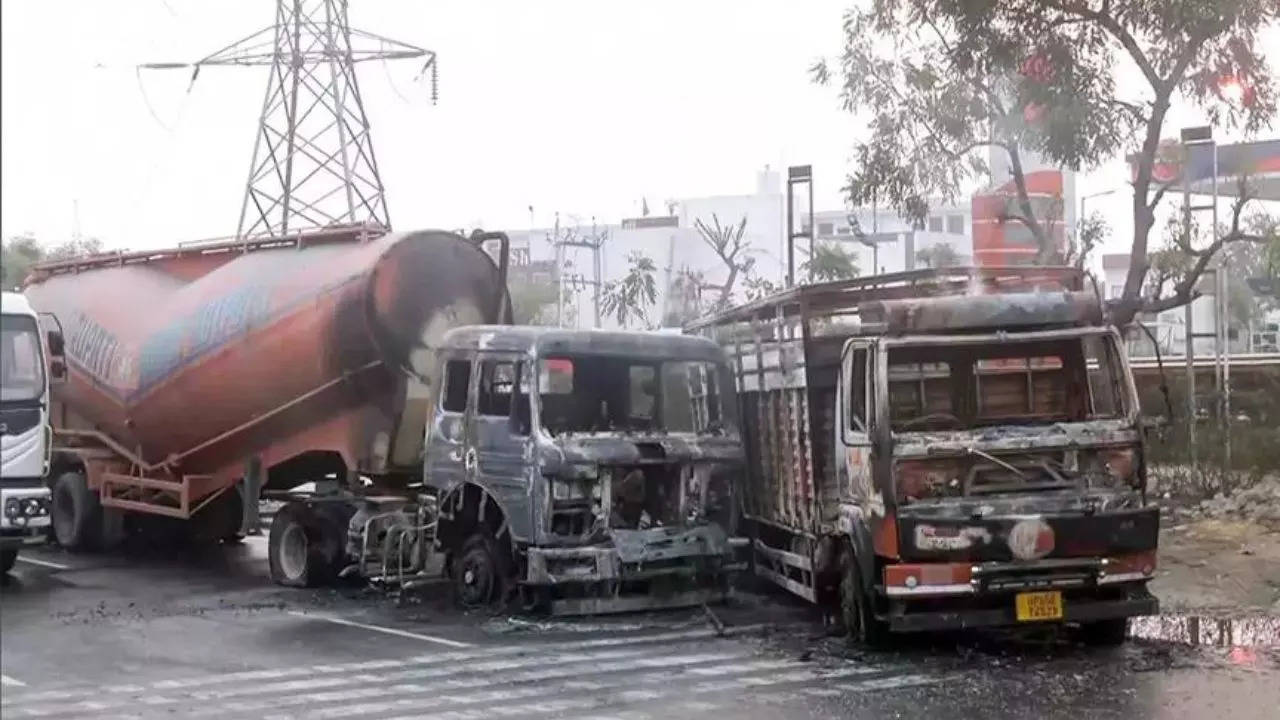 |
|
The devastating incident in Jaipur highlights the inherent risks associated with the transportation of hazardous materials. The collision between the LPG tanker and a truck resulted in a catastrophic chain reaction, rapidly escalating from a simple accident to a major disaster. The initial impact likely ruptured the LPG tanker, releasing a large quantity of highly flammable liquefied petroleum gas. The subsequent ignition, whether from the impact itself or a secondary source, triggered a ferocious inferno that spread rapidly across the highway. Eyewitness accounts paint a harrowing picture of chaos and terror, with people trapped in vehicles screaming for help as flames engulfed them. The sheer intensity of the fire, coupled with the rapid expansion of the blaze, suggests a significant release of LPG, creating an extremely volatile and dangerous situation. The rapid spread of the fire overwhelmed any immediate attempts at containment, leaving emergency services struggling to manage the escalating crisis. The scale of the destruction underscores the importance of stringent safety regulations and rigorous enforcement in the transportation of dangerous goods. The incident serves as a stark reminder of the potential consequences of even minor accidents involving hazardous materials.
The aftermath of the Jaipur gas tanker explosion is a scene of widespread devastation. At least 37 vehicles were completely destroyed by the fire, underscoring the explosive nature of the incident and the extent of the damage. The highway, a vital artery for traffic, was temporarily closed as emergency services worked tirelessly to extinguish the blaze and clear the wreckage. The process of clearing the highway involved a complex and meticulous operation, requiring specialized equipment and personnel to safely handle the hazardous materials and ensure the scene was secure before reopening. Beyond the immediate physical destruction, the incident left a trail of emotional scars on the individuals involved and the wider community. The trauma experienced by those who witnessed the fire, particularly those who lost loved ones or were themselves injured, will undoubtedly have lasting consequences. The mental health toll of such a catastrophic event should not be underestimated, and appropriate support services need to be made readily available to those affected.
This incident in Jaipur serves as a crucial case study for improving safety protocols within the transportation industry. A thorough investigation is paramount to understanding the precise sequence of events that led to the accident, identifying any contributing factors, and determining the extent of any negligence. This investigation should encompass a detailed analysis of the tanker's maintenance records, the driver's qualifications and adherence to safety regulations, and the overall safety procedures employed throughout the entire transportation process. Furthermore, the investigation should consider the efficacy of the emergency response, highlighting any areas where improvements could be made to enhance response times and effectiveness in handling similar incidents in the future. The findings of this investigation should inform the development of stricter regulations, improved training for drivers handling hazardous materials, and the implementation of enhanced safety measures to prevent similar tragedies from occurring again. The ultimate goal is to learn from this devastating event and take proactive steps to minimize the risks associated with the transportation of hazardous materials.
The Jaipur gas tanker explosion underscores the critical need for robust safety measures throughout the transportation and handling of hazardous materials. It serves as a powerful illustration of the devastating consequences that can result from seemingly minor accidents involving such materials. The sheer scale of the destruction, the number of vehicles involved, and the traumatic experiences of those affected emphasize the importance of stricter regulations, improved training, and increased vigilance in this vital sector. The investigation into the accident will be crucial in determining responsibility and identifying areas for improvement. However, beyond the legal and regulatory aspects, the incident prompts a broader reflection on the importance of risk assessment and mitigation in all industries handling potentially dangerous substances. The focus should not merely be on reacting to accidents, but on actively preventing them through a combination of technological advancements, enhanced safety procedures, and a strong commitment to safety culture.
Source: Jaipur gas tanker horror: A series of explosions, followed by screams for help by people on fire
